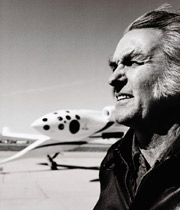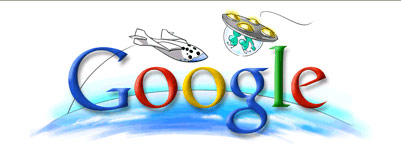Stick a Fork In Pluto…
Posted on…it’s done. No, this post is not a bad joke about how certain Asian countries eat dog but about Pluto, formerly known as the ninth planet in our solar system. Whether or not Pluto is a true planet has been a subject of much debate over the last decade. Finally, the debate is over. When the definition of planet was solidified today by the International Astronomical Union, Pluto got the boot.
| According to the Union, a planet is “a celestial body that is in orbit around the sun, has sufficient mass for its self-gravity to overcome rigid body forces so that it assumes a … nearly round shape, and has cleared the neighborhood around its orbit.” As Pluto’s orbit intersect’s Neptune’s orbit, it is automatically disqualified. A new category called “dwarf planets” has been created and that is where Pluto lives. I wonder if Disney will now change it to the 8 Dwarves and make Pluto an honorary member of the troop… |  |
After the jump, read all about it from the AP
Astronomers Decide Pluto Is Not a Planet
Filed at 12:20 p.m. ET, 8/24/06
PRAGUE, Czech Republic (AP) — Leading astronomers declared Thursday that Pluto is no longer a planet under historic new guidelines that downsize the solar system from nine planets to eight.
After a tumultuous week of clashing over the essence of the cosmos, the International Astronomical Union stripped Pluto of the planetary status it has held since its discovery in 1930. The new definition of what is — and isn’t — a planet fills a centuries-old black hole for scientists who have labored since Copernicus without one.
Although astronomers applauded after the vote, Jocelyn Bell Burnell — a specialist in neutron stars from Northern Ireland who oversaw the proceedings — urged those who might be ”quite disappointed” to look on the bright side.
”It could be argued that we are creating an umbrella called ‘planet’ under which the dwarf planets exist,” she said, drawing laughter by waving a stuffed Pluto of Walt Disney fame beneath a real umbrella.
”Many more Plutos wait to be discovered,” added Richard Binzel, a professor of planetary science at the Massachusetts Institute of Technology.
The decision by the prestigious international group spells out the basic tests that celestial objects will have to meet before they can be considered for admission to the elite cosmic club.
For now, membership will be restricted to the eight ”classical” planets in the solar system: Mercury, Venus, Earth, Mars, Jupiter, Saturn, Uranus and Neptune.
Much-maligned Pluto doesn’t make the grade under the new rules for a planet: ”a celestial body that is in orbit around the sun, has sufficient mass for its self-gravity to overcome rigid body forces so that it assumes a … nearly round shape, and has cleared the neighborhood around its orbit.”
Pluto is automatically disqualified because its oblong orbit overlaps with Neptune’s.
Instead, it will be reclassified in a new category of ”dwarf planets,” similar to what long have been termed ”minor planets.” The definition also lays out a third class of lesser objects that orbit the sun — ”small solar system bodies,” a term that will apply to numerous asteroids, comets and other natural satellites.
Experts said there could be dozens of dwarf planets catalogued across the solar system in the next few years.
NASA said Thursday that Pluto’s demotion would not affect its US$700 million New Horizons spacecraft mission, which earlier this year began a 9 1/2-year journey to the oddball object to unearth more of its secrets.
“We will continue pursuing exploration of the most scientifically interesting objects in the solar system, regardless of how they are categorized,” Paul Hertz, chief scientist for the science mission directorate, said in a statement.
The decision on Pluto at a conference of 2,500 astronomers from 75 countries was a dramatic shift from just a week ago, when the group’s leaders floated a proposal that would have reaffirmed Pluto’s planetary status and made planets of its largest moon and two other objects.
That plan proved highly unpopular, splitting astronomers into factions and triggering days of sometimes combative debate that led to Pluto’s undoing. In the end, only about 300 astronomers cast ballots.
Now, two of the objects that at one point were cruising toward possible full-fledged planethood will join Pluto as dwarfs: the asteroid Ceres, which was a planet in the 1800s before it got demoted, and 2003 UB313, an icy object slightly larger than Pluto whose discoverer, Michael Brown of the California Institute of Technology, has nicknamed Xena.
Charon, the largest of Pluto’s three moons, is no longer under consideration for any special designation.
Brown, who watched the proceedings from Cal Tech, took Thursday’s vote in stride — even though his discovery won’t be christened a planet.
”UB313 is the largest dwarf planet. That’s kind of cool,” he said.
——
AP Science Writer Alicia Chang in Los Angeles contributed to this story

